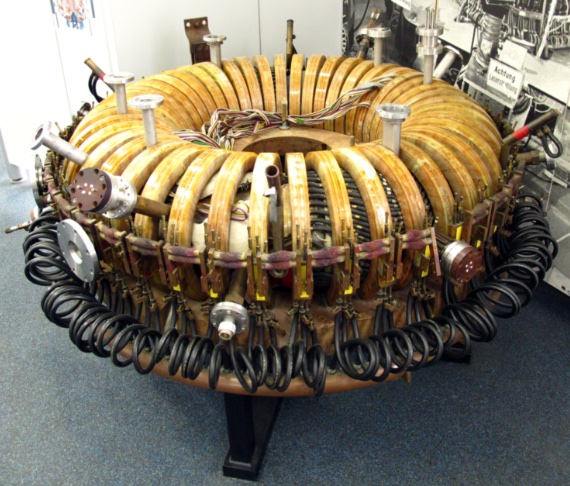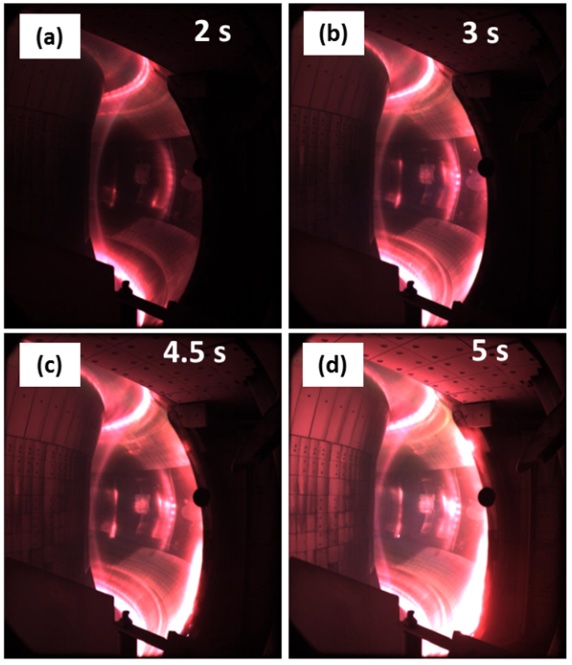On March 23, 1989, a hopeful news story spread rapidly to every last corner of the globe: two researchers had obtained a “clean and virtually inexhaustible source of energy” through a “surprisingly simple experiment,” according to a press release distributed at the time to publicise the alleged discovery.
Only one cubic foot of seawater, the resource used by the technique, was enough to produce the same energy as ten tons of coal, said Martin Fleischmann from the University of Southampton (UK) and Stanley Pons from the University of Utah (USA). The device created by the researchers was so simple that it seemed more typical of a college laboratory than the most revolutionary finding in the history of energy..
However, as we now know, it was not the most revolutionary finding in the history of energy. So-called cold fusion was one of the greatest fiascos in the history of science. Other researchers were unable to replicate the results of Fleischmann and Pons, and many hastened to clarify that there was no credible theoretical basis to support their proclamation. However, some researchers continue to pursue this line, even at serious risk to their credibility as scientists. In 2019, Nature revealed that Google had quietly spent $10 million on cold fusion research, to no avail. Nevertheless, certain anomalies detected in the experiments still keep the quest alive.

From the point of view of humans, nuclear fusion can be considered the most important natural source of energy in the universe, since without it we would not be here. The Sun fuses protons, or the nuclei of hydrogen, to produce helium, releasing light and heat and emitting neutrons. It has been doing this for almost 4.6 billion years, and scientists believe that it has enough fuel left for at least one billion more years. Since the mid-twentieth century, when the process by which stars work was understood, human beings have aspired to reproduce the fusion process artificially. “The huge potential of fusion has been known for many years,” Ian Chapman, the first director of the UK Atomic Energy Authority (UKAEA), tells OpenMind.
Building small suns on Earth
The process that takes place in the Sun is produced at millions of degrees. At these temperatures a plasma is formed that dislodges the electrons from their atoms and allows the nuclei to approach each other to achieve fusion, either using normal hydrogen or its isotopes deuterium (with two neutrons) or tritium (with three neutrons). Fleischmann and Pons argued that an electrolysis process using palladium concentrated deuterium in the metal to the extent necessary to cause fusion. But unfortunately, it is not so simple; to create a fusion reactor, researchers have to build small suns on Earth.
The most popular of the systems developed so far is the tokamak, a donut-shaped reactor that keeps the plasma confined in its interior by an internal electromagnetic current. This is the option chosen for ITER, a large fusion reactor of 30 metres in diameter that is being built in Cadarache (France) and that arises from an agreement signed in 1985 by the then-leaders of the United States, Ronald Reagan, and the Soviet Union, Mikhail Gorbachev. ITER, under construction since 2007, is funded by seven partners: the European Union (plus Switzerland), the US, Russia, China, India, Japan and South Korea.

The complexity of ITER has delayed the projected start of the plasma injection from 2016 to 2025 and has raised its cost to an estimated 13 billion euros. In May 2020, assembly of the tokamak finally began, which according to the current schedule should be completed in 2025. But once finalized and in operation, there will still be many challenges to overcome. The first is that the energy produced by the fusion must be greater than the energy invested in it; in other words, that it produces net energy. Daniel Clery, physicist, journalist for Science magazine and author of the book A Piece of the Sun: The Quest for Fusion Energy (Overlook, 2013), explained to OpenMind that in the 1990s it was almost possible to reach this point of equilibrium in the Joint European Torus (JET), the largest tokamak in the world, located in Culham (UK) and managed by the UKAEA.
“Fusion is possible, but not practical”
“I have little doubt that ITER, when it eventually gets finished, will achieve that goal and maybe even demonstrate significant energy gain,” says Clery. But even then, there will be other challenges before the reactor can provide power to the grid. “Researchers will have to figure out how to keep the plasma stable and burning for long periods of time; how to stop high-energy neutrons degrading the structure of the reactor; how to breed tritium to use as fuel; and innumerable other problems,” adds Clery. “So fusion power may turn out to be possible, but not practical. But we will never know until we try and unless governments and the power industry invest more it will be decades until we find out,” he concludes.

Chapman sets some dates and numbers: at the beginning of the 2030s, ITER will produce 500 megawatts, consuming between 50 and 100. The head of the UKAEA points out that ITER will solve many of the problems still pending with the support of researchers from other facilities already in operation, like Culham’s JET. “The EU roadmap for fusion anticipates demonstration fusion power on the grid around 2050, and commercial power-plants thereafter,” he summarizes.
A certainty in the long run
But as ITER continues on its way, scientists work on alternative solutions to the tokamak. Among those that also work by magnetic confinement, one that stands out is the stellarator, with a shape reminiscent of a Möbius strip, and where external coils control the plasma. “It is more stable than tokamak and allows for a longer operation,” explains Boudewijn van Milligen, researcher at the National Fusion Laboratory of the Centre for Energy, Environmental and Technological Research (CIEMAT) in Spain, which houses the TJ-II stellarator.
For Van Milligen, also the creator and administrator of the FusionWiki website, the stellarator and other systems currently under development are very important alternatives, although “it is a bit difficult to say which will be the first to achieve the goal, the production of electricity for the grid.” The physicist stresses that all systems have problems, “but they are engineering problems, not ones of principle.” Even with all the obstacles to overcome, Van Milligen is convinced that fusion power is not a possibility but a certainty, although in the long run. “It may take many years, but we are in a position to say that it will produce net energy,” he says. And, according to Chapman, “we are in the final stretch of the journey.”

In recent years, the urgent need to find new energy solutions to combat climate change has accelerated the race towards nuclear fusion, attracting the interest of several private companies vying for the goal of bringing fusion power to the grid by the 2030s, an ambition that many experts believe is unrealistic. In China, the government has approved the construction of a combined fusion-fission reactor that aims to generate fusion power by 2028, a goal that, if achieved, would put the Asian powerhouse at the forefront of fusion power research.
Among the latest recent breakthroughs at the various experimental facilities, one stands out. On 5 December 2022, researchers at the National Ignition Facility (NIF) at Lawrence Livermore National Laboratory in California achieved for the first time the milestone of producing net energy from a fusion reaction. The NIF is based on a radically different principle from tokamaks and stellarators, called inertial confinement. This involves placing a tiny pellet of deuterium and tritium inside a small gold cylinder the size of a pencil eraser, and bombarding it with 192 high-energy laser beamlines. This produces X-rays that implode the fuel at millions of degrees, causing fusion.
When so-called ignition is achieved, the process is self-sustaining: the fusion spreads around to the rest of the fuel before the heat has time to escape—similar to the chain reaction of nuclear fission—and it is then that more energy is produced than is injected. In 2021, NIF approached this goal with an energy gain of 0.7, still negative; in the new experiment, 3.15 megajoules of fusion energy output have been obtained from the 2 megajoules delivered by the lasers, an energy gain of more than 1.5 or 150 percent. This is an experimental result, with no possible application as an energy source for the time being, but it is a historic milestone that has been described as “one of the most impressive scientific feats of the 21st century” and has been compared to the pioneering flight of the Wright brothers.
Inertial confinement presents many tricky engineering problems that will have to be addressed, starting with the fact that lasers need about 10 times more energy to operate than they inject into the pellet, so there is no real net gain in the overall process, a goal that ITER is expected to achieve. Magnetic confinement systems have achieved times of seconds, rather than the billionths of a second it takes for the NIF fuel pellet to vaporise.

Nevertheless, tokamaks and stellarators have not yet achieved ignition, but have made significant incremental progress. In 2020, China powered up its HL-2M Tokamak reactor, the largest facility of its kind in the country. At Culham in February 2022, JET managed to produce 59 megajoules of energy for five seconds, equivalent to 11 megawatts of power—not a huge energy output, but a new record for the UK reactor. More importantly, experts point out that the JET milestone has been achieved thanks to an improvement in the reactor walls, a crucial innovation.
In June 2021, the Chinese Academy of Sciences’ EAST (Experimental Advanced Superconducting Tokamak, or HT-7U) reactor achieved a plasma temperature of 120 million degrees for 101 seconds, a mark that the same reactor beat seven months later by maintaining the plasma for 1,056 seconds. In Korea, the KSTAR tokamak has succeeded in stabilising plasma at about 100 million kelvin for more than 20 seconds. These temperatures are six to eight times higher than those of the Sun’s core.
Ultimately, there are still many technical challenges to overcome; there is an old joke among fusion experts that nuclear fusion energy is 30 years away, and always will be. But achievements such as that of NIF have renewed the drive to accelerate progress in this field, and perhaps in the next few years we will finally see the real countdown to the arrival of fusion power start to fall.
Comments on this publication